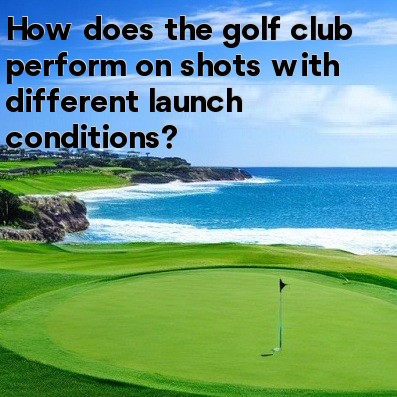
In golf, the performance of the golf club can vary significantly depending on the launch conditions of a shot. The launch conditions, which include factors such as clubhead speed, angle of attack, spin rate, and launch angle, can greatly influence the distance, accuracy, and trajectory of the shot. Let's take a closer look at how the golf club performs on shots with different launch conditions.
1. Clubhead Speed:
Clubhead speed refers to the speed at which the clubhead is traveling when it strikes the ball. A higher clubhead speed generally results in more distance. When the clubhead speed is high, the ball tends to fly farther due to increased energy transfer. This is particularly beneficial on long shots, such as drives off the tee or long approach shots.
2. Angle of Attack:
Angle of attack describes the angle at which the clubhead approaches the ball. It can be upward, neutral, or downward. The angle of attack directly affects the launch angle and spin rate of the shot. For example, a steeper angle of attack with a driver can help create more backspin, resulting in a higher launch and more carry distance.
3. Spin Rate:
Spin rate refers to the amount of spin the ball has after being struck by the club. The spin rate can determine the ball's trajectory and control. When a shot has low spin, the ball tends to have less lift and roll more upon landing. On the other hand, shots with high spin rates tend to have a steeper descent angle and stop quickly upon landing. Controlling spin is crucial for accuracy and distance control.
4. Launch Angle:
Launch angle is the angle at which the ball takes off from the ground. It is a critical factor in determining the shot's carry distance and trajectory. The appropriate launch angle can vary depending on the club being used and the intended shot. Higher-lofted clubs, such as wedges, typically require a higher launch angle, while lower-lofted clubs, like drivers, benefit from a lower launch angle for maximum distance.
Understanding how the golf club performs under different launch conditions allows players to make informed decisions on course. By adjusting their swing technique or equipment, golfers can optimize their performance based on their specific needs. Additionally, technologies such as launch monitors and custom club fitting can provide valuable data to help golfers fine-tune their launch conditions.
In conclusion, the performance of the golf club is greatly influenced by the launch conditions of a shot. Factors such as clubhead speed, angle of attack, spin rate, and launch angle all play significant roles in determining the distance, accuracy, and trajectory of the shot. By understanding and optimizing these launch conditions, golfers can improve their overall game and achieve better results on the golf course.





